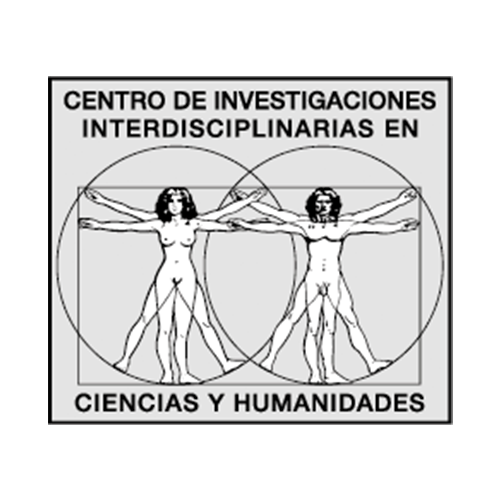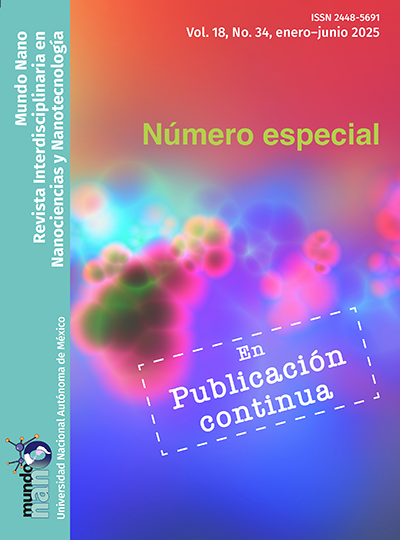Nanopartículas en el control de insectos y ácaros plaga
Contenido principal del artículo
Resumen
La producción agrícola a nivel mundial es cada día más demandante. Dentro de las principales limitantes para la producción de alimentos encontramos los artrópodos plaga (insectos y ácaros), causantes de afectaciones importantes a los cultivos, directamente a la producción y rendimiento. Los insectos y ácaros fitófagos representan una fuerte amenaza para los cultivos agrícolas, ocasionando grandes pérdidas económicas. El control químico, uno de los más usados para el manejo de plagas y ácaros, ha ocasionado problemas de resistencia en diferentes tipos de plagas, ha afectado la salud humana y animal, así como también a especies no blanco y beneficiosas. En los últimos años, se han explorado diferentes alternativas de la nanotecnología para el manejo y control de los principales grupos de insectos y ácaros plaga. En esta revisión expondremos y debatiremos el rol de las nanopartículas (NPs) como herramientas en el control y manejo de las principales especies de insectos y ácaros plaga.
Descargas
Detalles del artículo

Mundo Nano. Revista Interdisciplinaria en Nanociencias y Nanotecnología, editada por la Universidad Nacional Autónoma de México, se distribuye bajo una Licencia Creative Commons Atribución-NoComercial 4.0 Internacional.
Basada en una obra en http://www.mundonano.unam.mx.
Citas
Abdel Ghani, S. B., Al-Azzazy, M. M. y Lucini, L. (2022). The miticidal activity of silver nanoparticles towards phytophagous and predatory mites of citrus: efficacy and selectivity. Emirates Journal of Food & Agriculture (EJFA), 34(6): 261-262. https://doi.org/10.9755/ejfa.2022.v34.i6.2888.
Abdel-Gawad, R. M. (2018). Insecticidal activity of Moringa oleifera synthesized silver and zinc nanoparticles against the house fly, Musca domestica L. Egyptian Academic Journal of Biological Sciences. A, Entomology, 11(4): 19-30. https://doi.org/10.21608/eajbsa.2018.17729. DOI: https://doi.org/10.21608/eajbsa.2018.17729
Ahmadi, Z., Saber, M., Akbari, A. y Mahdavinia, G. R. (2018). Encapsulation of Satureja hortensis L. (Lamiaceae) in chitosan/TPP nanoparticles with enhanced acaricide activity against Tetranychus urticae Koch (Acari: Tetranychidae). Ecotoxicology and Environmental Safety, 161: 111-119. https://doi.org/10.1016/j.ecoenv.2013-8.05.051. DOI: https://doi.org/10.1016/j.ecoenv.2018.05.051
Ahmed, S. H., Mohmed, A. y Hussein, A. M. (2023). Mycosynthesis of silver nanoparticles and evaluation as insecticidal against the sunn pest Eurygaster testudinaria in vitro. IOP Conf. Series: Earth and Environmental Science, 1158: 13-72. https://doi.org/10.1088/1755-1315/1158/7/072013. DOI: https://doi.org/10.1088/1755-1315/1158/7/072013
Al-Azzazy, M. M. y S. B. Abdel-Ghani. (2024). Field evaluation of the efficacy of copper nanoparticles against mites associated with orange trees. Brazilian Journal of Biology, 84: 270-451. https://doi.org/10.1590/1519-6984.270451. DOI: https://doi.org/10.1590/1519-6984.270451
Al-Azzazy, M. M., Abdel-Ghani, S., B. y Alhewairini, S. S. (2019). Field evaluation of the efficacy of silver nanoparticles (AgNp) against mites associated with tomato plants in greenhouses Pak. J. Agri. Sci, 56(1): 283-288. https://doi.org/10.21162/PAKJAS/19.8155. DOI: https://doi.org/10.21162/PAKJAS/19.8155
Al-Hamdani H., M. y Hameed, R. S. (2023). Preparation of the environmentally friendly green nano insecticide using copper salts. 3C Tecnología. Glosas de innovación aplicada a la PYME, 12(1): 225-241. https://doi.org/10.17993/3ctecno.2023.v12n1e43.225-241. DOI: https://doi.org/10.17993/3ctecno.2023.v12n1e43.225-241
Alif, A. A. S. y Thangapandiyan, S. (2019). Comparative bioassay of silver nanoparticles and malathion on infestation of red flour beetle, Tribolium castaneum. The Journal of Basic and Applied Zoology, 80(1): 1-10. https://doi.org/10.1186/s41936-019-0124-0. DOI: https://doi.org/10.1186/s41936-019-0124-0
Alimohamadian, M., Aramideh, S., Mirfakhraie, S. y Frozan, M. (2022). Silica nanoparticle: a potential of noninvasive and as a natural insecticide application for beet armyworm, Spodoptera exigua Hubner (Lep.: Noctuidae) control. Agricultural Engineering International: CIGR Journal, 24(2): 248-257. https://cigrjournal.org/index.php/Ejounral/article/download/7515/3885/37071.
Almadiy, A. A., Nenaah, G. E. y Shawer, D. M. (2018). Facile synthesis of silver nanoparticles using harmala alkaloids and their insecticidal and growth inhibitory activities against the khapra beetle. Journal of Pest Science, 91: 727-737. https://doi.org/10.1007/s10340-017-0924-2. DOI: https://doi.org/10.1007/s10340-017-0924-2
Al-Shammari, H. I. y Al-Zubaidi, H. K. (2016). Toxicity of silver nanoparticles prepared by extract of Eucalyptus sp in some biological aspects of Citrus mealybug Planococcus citri (Risso), Hemiptera: Pseudococcidae. European Academic Research, 4: 7658-7675.
Amjad, T., Afsheen, S. y Iqbal, T. (2022). Nanocidal effect of rice husk–based silver nanoparticles on antioxidant enzymes of aphid. Biol Trace Elem Res, 200: 4855-4864. https://doi.org/10.1007/s1+2011-021-03067-5. DOI: https://doi.org/10.1007/s12011-021-03067-5
Athanassiou, C. G., Kavallieratos, N. G., Benelli, G., Losic, D., Usha Rani, P. y Desneux, N. (2018). Nanoparticles for pest control: current status and future perspectives. Journal of Pest Science, 91: 1-15. https://doi.org/10.1007/s10340-017-0898-0. DOI: https://doi.org/10.1007/s10340-017-0898-0
Attia, Y. K., Raffat, B., Abo, A., Ahmed, A., Ismail, A. y George, M. N. (2015). Impact of nanoparticle zinc oxide and aluminum oxide against rice weevil Sitophilus oryzae (coleoptera: curculionidae) under laboratory conditions egy. J. Plant Pro. Res. 3(3): 30-38. https://kfs.edu.eg/agre/pdf/184201611233516.pdf.
Auffan, M., Rose, J., Bottero, J. Y., Lowry, G. V., Jolivet, J. P. y Wiesner, M. R. (2009). Towards a definition of inorganic nanoparticles from an environmental, health and safety perspective. Nature Nanotechnology, 4(10): 634-641. https://doi.org/10.1038/nnano.2009.242. DOI: https://doi.org/10.1038/nnano.2009.242
Baranitharan, M., Alarifi, S., Alkahtani, S., Ali, D., Elumalai, K., Pandiyan, J., Krishnappa, K., Rajeswary, M. y Govindarajan, M. (2021). Phytochemical analysis and fabrication of silver nanoparticles using Acacia catechu: an efficacious and ecofriendly control tool against selected polyphagous insect pests. Saudi Journal of Biological Sciences, 28(1): 148-156. https://doi.org/10.1016/j.sjbs.2020.09.024. DOI: https://doi.org/10.1016/j.sjbs.2020.09.024
Benelli, G. (2016). Green synthesized nanoparticles in the fight against mosquito-borne diseases and cancer-a brief review. Enzyme and Microbial Technology, 95: 58-68. https://doi.org/10.1016/j.enzmictec.2016.08.022. DOI: https://doi.org/10.1016/j.enzmictec.2016.08.022
Benelli, G. (2018). Mode of action of nanoparticles against insects. Environmental Science and Pollution Research International, 25(13): 12329-12341. https://doi.org/10.1007/s11356-018-1850-4. PMID: 29611126. DOI: https://doi.org/10.1007/s11356-018-1850-4
Benelli, G., Maggi, F., Romano, D., Stefanini, C., Vaseeharan, B., Kumar, S. y Canale, A. (2017). Nanoparticles as effective acaricides against ticks a review. Ticks and Tick-Borne Diseases, 8(6): 821-826. https://doi.org/10.1016/j.ttbdis.2017.08.004. DOI: https://doi.org/10.1016/j.ttbdis.2017.08.004
Bhattacharyya, A., Prasad, R., Buhroo, A. A., Duraisamy, P., Yousuf, I., Umadevi, M. y Khanday, A. L. (2016). One-pot fabrication and characterization of silver nanoparticles using Solanum lycopersicum: an eco-friendly and potent control tool against rose aphid, Macrosiphum rosae. Journal of Nanoscience, 1: 1-7. doi:10.1155/2016/4679410. DOI: https://doi.org/10.1155/2016/4679410
Bonser, C. A., Borgatta, J., White, J. C., Astete, C. E., Sabliov, C. M. y Davis, J. A. (2023). Impact of zein and lignin‐PLGA biopolymer nanoparticles used as pesticide nanocarriers on soybean growth and yield under field conditions. Agrosystems, Geosciences & Environment, 6(2): 20-35. https://doi.org/10.1002/agg2.20350. DOI: https://doi.org/10.1002/agg2.20350
Carranza, P. M., Contreras, M. M., Macías, L. M., Pincay, P. P., Rendón, M. E. y Robinson, H. F. (2023). Uso de los pesticidas y su efecto en el cultivo de Zea mays: una revisión de la literatura. Código Científico Revista de Investigación, 4: 1258-1286. https://doi.org/10.55813/gaea/ccri/v4/nE2/219. DOI: https://doi.org/10.55813/gaea/ccri/v4/nE2/219
Chakravarthy, A. K., Bhattacharyya, A., Shashank, P. R., Epidi, T. T., Doddabasappa, B. y Mandal, S. K. (2012). DNA-tagged nano gold: a new tool for the control of the armyworm, Spodoptera litura Fab.(Lepidoptera: Noctuidae). Afr J Biotechnol, 11(38): 9295-9301. https://doi.org/10.5897/AJB11.883. DOI: https://doi.org/10.5897/AJB11.883
Correa, P. Z., Bautista, B., S., Hernández, L. M. y Marquina, V. M. (2018). Evaluación de nanoformulaciones en el desarrollo in vitro de hongos fitopatógenos. Revista Mexicana de Fitopatología, 36(3): 457-467. https://doi.org/10.18781/r.mex.fit.1803-2. DOI: https://doi.org/10.18781/R.MEX.FIT.1803-2
Dasgupta, N., Ranjan, S., Mundekkad, D., Ramalingam, C., Shanker, R. y Kumar, A. (2015). Nanotechnology in agro-food: from field to plate. Food Research International, 69: 381-400. https://doi.org/10.1016/j.foodres.2015.01.005. DOI: https://doi.org/10.1016/j.foodres.2015.01.005
El-Ashram, S., Kheirallah, D. A. M., El-Samad, L. M. y Toto, N. A. (2020). Relative expression of microRNAs, apoptosis, and ultrastructure anomalies induced by gold nanoparticles in Trachyderma hispida (Coleoptera: Tenebrionidae). PLOS ONE, 15(11): 24-37. https://doi.org/10.1371/journal.pone.0241837. DOI: https://doi.org/10.1371/journal.pone.0241837
El-Bendary, H. M. y El-Helaly, A. A. (2013). First record nanotechnology in agricultural: silica nano-particles a potential new insecticide for pest control. Applied of Scientific Reports, 4(3): 241-246. https://www.fayoum.edu.eg/English/Agri/PlantProtection/pdf/MrHelmiE2.pdf.
Elsadany, M. F., Aboulila, A. A., Abo-Sein, T. M. y Magouz, R. I. E. (2015). Effect of silica nano-particles in control of mite, Tetranychus cucurbitacearum (Sayed) and agronomic traits of soybean plants and qualitative assessment of its genotoxicity using total protein and RAPD analysis. Journal of Agricultural Chemistry and Biotechnology, 6(11): 529-544. https://doi.org/10.21608/jacb.2015.48470. DOI: https://doi.org/10.21608/jacb.2015.48470
Emam, H., Ibrahim, M. S., Ibrahim, M. y El-Sayed, S. (2021). Greenhouse and laboratory evaluation of the efficiency of green silicon dioxide nanoparticles against Tetranychus urticae (Koch). Arab Universities Journal of Agricultural Sciences, 29(3): 901-912. https://doi.org/10.21608/ajs.2021.92246.1411. DOI: https://doi.org/10.21608/ajs.2021.92246.1411
Ghan, S. B. A. y Al-Azzazy, M. (2022). The miticidal activity of silver nanoparticles towards phytophagous and predatory mites of citrus: efficacy and selectivity. Emirates Journal of Food and Agriculture, 34(6): 509-518. https://doi.org/10.9755/ejfa.2022.v34.i6.2888. DOI: https://doi.org/10.9755/ejfa.2022.v34.i6.2888
Ghan, S. B. A., Al-Azzazy, M. M., Alhewairini, S. S. y Al-Deghairi, M. A. (2022). The miticidal activity of silver nanoparticles towards date palm mite (Oligonychus afrasiaticus (McGregor)): efficacy, selectivity, and risk assessment. Brazilian Journal of Biology, 84: 1-8. https://doi.org/10.1590/1519-6984.2661262. DOI: https://doi.org/10.1590/1519-6984.261262
Gutiérrez, M. J. A., Betancourt, G. R., Aguirre,U. L. A., Cerna, C. E., Sandoval, R. A., Ángel, E. C., Chacón, H. J. C.; García, L. J. I., y Hernández, J. A. (2021). Insecticidal effect of zinc oxide and titanium dioxide nanoparticles against Bactericera cockerelli Sulc. (Hemiptera: Triozidae) on tomato Solanum lycopersicum. Agronomy, 11(8): 1460-1480. https://doi.org/10.3390/ agronomy11081460. DOI: https://doi.org/10.3390/agronomy11081460
Hameed, R. S., Fayyad, R. J., Shafeeq, M. A. A. y Nuaman, R. S. (2023). Manufacturing and characterization of an effective and eco‐friendly nano insecticide with the aid of green alga Chlorella vulgaris in contrast to traditional insecticide. Indonesian Journal of Biotechnology, 28(2): 112-118. https://doi.org/10.22146/ijbiotech.79105. DOI: https://doi.org/10.22146/ijbiotech.79105
Haroun, S. A., Elnaggar, M. E., Zein, D. M. y Gad, R. I. (2020). Insecticidal efficiency and safety of zinc oxide and hydrophilic silica nanoparticles against some stored seed insects. Journal of Plant Protection Research, 60(1): 77-85. https://doi.org/10.24425/jppr.2020.132211. DOI: https://doi.org/10.24425/jppr.2020.132211
Hernández, T. A., Estrada, D. B., Rodríguez, H. R., García, G. J. M., Patiño, A. S. A. y Osorio H. E. (2019). Importancia del control biológico de plagas en maíz (Zea mays L.). Revista Mexicana de Ciencias Agrícolas, 10(4): 803-813. https://doi.org/10.29312/remexca.v10i4.1665. DOI: https://doi.org/10.29312/remexca.v10i4.1665
Hernández, T. F. y Orozco, S. F. (2020). Nanoformulaciones de bioinsecticidas botánicos para el control de plagas agrícolas. Revista de la Facultad de Ciencias, 9(1): 72-91. Universidad Nacional de Colombia. https://doi.org/10.15446/rev.fac.cienc.v9n1.81401. DOI: https://doi.org/10.15446/rev.fac.cienc.v9n1.81401
Hua, K. H., Wang, H. C., Chung, R. S. y Hsu, J. C. (2015). Calcium carbonate nanoparticles can enhance plant nutrition and insect pest tolerance. Journal of Pesticide Science, 40(4): 208-213. https://doi.org/10.1584/jpestics.d15-025. DOI: https://doi.org/10.1584/jpestics.D15-025
Ihegwuagu, N. E., Sha’Ato, R., Tor-Anyiin, T. A., Nnamonu, L. A., Buekes, P., Soneab, B. y Maazaab, M. (2016). Facile formulation of starch–silver-nanoparticle encapsulated dichlorvos and chlorpyrifos for enhanced insecticide delivery. New Journal of Chemistry, 40(2): 1777-1784. https://doi.org/10.1039/c5nj01831e. DOI: https://doi.org/10.1039/C5NJ01831E
Jafir, M., Ahmad, J. N., Arif, M. J., Ali, S. y Ahmad S. J. N. (2021). Characterization of Ocimum basilicum synthesized silver nanoparticles and its relative toxicity to some insecticides against tobacco cutworm, Spodoptera litura Feb. (Lepidoptera; Noctuidae). Ecotoxicology and Environmental Safety, 218: 112-127. https://doi.org/10.1016/j.ecoenv.2021.112278. PMID: 33965777. DOI: https://doi.org/10.1016/j.ecoenv.2021.112278
Jameel, M., Shoeb, M., Khan, M. T., Ullah, R., Mobin, M., Farooqi, M. K. y Adnan, S. M. (2020). Enhanced insecticidal activity of thiamethoxam by zinc oxide nanoparticles: a novel nanotechnology approach for pest control. ACS Omega, 5(3): 1607-1615. https://doi.org/10.1021/acsomega.9b03680. DOI: https://doi.org/10.1021/acsomega.9b03680
Kantrao, S., Ravindra, M. A., Akbar, S. M. D., Jayanthi, P. K. y Venkataraman, A. (2017). Effect of biosynthesized silver nanoparticles on growth and development of Helicoverpa armigera (Lepidoptera: Noctuidae): Interaction with midgut protease. Journal of Asia-Pacific Entomology, 20(2): 583-589. https://doi.org/10.1016/j.aspen.2017.03.018. DOI: https://doi.org/10.1016/j.aspen.2017.03.018
Khatami, M., Iravani, S., Varma, R. S., Mosazade, F., Darroudi, M. y Borhani, F. (2019). Cockroach wings-promoted safe and greener synthesis of silver nanoparticles and their insecticidal activity. Bioprocess and Biosystems Engineering, 42(12): 2007-2014. https://doi.org/10.1007/s00449-019-02193-8. DOI: https://doi.org/10.1007/s00449-019-02193-8
Khooshe, Z., Sahebzadeh, N., Ghaffari, M. y Mirshekar, A. (2016). Insecticidal effects of zinc oxide nanoparticles and Beauveria bassiana TS11 on Trialeurodes vaporariorum (Westwood, 1856) (Hemiptera: Aleyrodidae). Acta Agriculturae Slovenica, 107(2): 299-309. https://doi.org/10.14720/aas.2016.107.2.04. DOI: https://doi.org/10.14720/aas.2016.107.2.04
Kumar, S., Nehra, M., Dilbaghi, N., Marrazza, G., Aly Hassan, A. y Kim, K. H. (2019). Nano-based smart pesticide formulations: emerging opportunities for agriculture. Journal of Controlled Release, 294: 131-153. https://doi.org/10.1016/j.jconrel.2018.12.012. DOI: https://doi.org/10.1016/j.jconrel.2018.12.012
León, J. E., Valdéz, S. B., González, M. D. y Tzintzun, C. O. (2019). Síntesis y actividad insecticida de nanopartículas de Cu de Prosopis juliflora (Sw) DC y Pluchea sericea (Nutt.) sobre Phenacoccus solenopsis Tinsley (Hemiptera: Pseudococcidae). Revista de la Sociedad Entomológica Argentina, 78(2): 1-10. https://doi.org/10.25085/rsea.780202. DOI: https://doi.org/10.25085/rsea.780202
Lira, S. R. H., Méndez, A. B., Santos, V. G. D. y Vera, R. I. (2018). Potencial de la nanotecnología en la agricultura. Acta Universitaria, 28(2): 9-24. https://doi.org/10.15174/au.2018.1575. DOI: https://doi.org/10.15174/au.2018.1575
Manimegalai, T., Raguvaran, K., Kalpana, M., Ajarem, A. J. S., Allam, A. A., Khim, J. S. y Maheswaran, R. (2022). Bio efficacy of synthesised silver nanoparticles using Dicrocephala integrifolia leaf extract and their insecticidal activity. Materials Letters, 314: 13-18. https://doi.org/10.1016/j.matlet.2022.131860. DOI: https://doi.org/10.1016/j.matlet.2022.131860
Mao, B. H., Chen, Z. Y., Wang, Y. J. y Yan, S. J. (2018). Silver nanoparticles have lethal and sublethal adverse effects on development and longevity by inducing ROS-mediated stress responses. PubMed Scientific Reports, 8(1):2445-2461. https://doi.org/10.1038/s41598-018-20728-z. DOI: https://doi.org/10.1038/s41598-018-20728-z
Martins, C. H. Z., De Sousa, M., Fonseca, L. C., Martínez, D. S. T. y Alves, O. L. (2019). Biological effects of oxidized carbon nanomaterials (1D versus 2D) on Spodoptera frugiperda: Material dimensionality influences on the insect development, performance and nutritional physiology. Chemosphere, 215: 766-774. https://doi.org/10.1016/j.chemosphere.2018.09.178. DOI: https://doi.org/10.1016/j.chemosphere.2018.09.178
Méndez, T. V., Valdez, S. B., Curiel, A. M., Beltrán, P. E., Alfaro, C., Ruiz, S. E., Bautista, T. G., Tzintzun, C. O., Grimaldo, J. O., Ceceña, D. C., Ail, C. C. y González, M. D. (2022). Insecticidal effect of green bimetallic nanoparticles from Crotalaria longirostrata on cotton mealybug, Phenacoccus solenopsis. Journal of Renewable Materials, 10(10): 2543-2552. https://doi.org/10.32604/jrm.2022.020965. DOI: https://doi.org/10.32604/jrm.2022.020965
Mesa, M. R. y Esparcia P. J. (2023). Cambios en la demanda y estrategias de adaptación en producciones agrarias sostenibles durante el confinamiento por la pandemia COVID-19. Anales de Geografía de la Universidad Complutense, 43(1): 109-132. https://doi.org/10.5209/aguc.85940. DOI: https://doi.org/10.5209/aguc.85940
Moorthi, P. V., Balasubramanian, C. y Mohan, S. (2015). An improved insecticidal activity of silver nanoparticle synthesized by using Sargassum muticum. Applied Biochemistry and Biotechnology, 175(1): 135-140. https://doi.org/10.1007/s12010-014-1264-9. DOI: https://doi.org/10.1007/s12010-014-1264-9
Mosa, W. F. A., Mackled, M. I., Abdelsalam, N. R., Behiry, S. I., Al-Askar, A. A., Basile, A., Abdelkhalek, A., Elsharkawy, M. M. y Salem, M. Z. M. (2022). Impact of silver nanoparticles on lemon growth performance: insecticidal and antifungal activities of essential oils from peels and leaves. Frontiers in Plant Science, 13: 846-898. https://doi.org/10.3389/fpls.2022.898846. DOI: https://doi.org/10.3389/fpls.2022.898846
Murugan, K., Roni, M., Panneerselvam, C., Aziz, A. T., Suresh, U., Rajaganesh, R., Aruliah, R., Mahyoub, J. A., Trivedi, S., Rehman, H., Naji Al-Aoh, H. A., Kumar, S., Higuchi, A., Vaseeharan, B., Wei, H., Senthil-Nathan, S., Canale, A. y Benelli, G. (2018). Sargassum wightii-synthesized ZnO nanoparticles reduce the fitness and reproduction of the malaria vector Anopheles stephensi and cotton bollworm Helicoverpa armigera. Physiological and Molecular Plant Pathology, 101: 202-213. https://doi.org/10.1016/j.pmpp.2017.02.004. DOI: https://doi.org/10.1016/j.pmpp.2017.02.004
Oliveira, F., Doelle, K., List, R. y O’Reilly, J. R. (2015). Assessment of Diptera: Stratiomyidae, genus Hermetia illucens (L., 1758) using electron microscopy. J. Entomol. Zool. Stud., 3(5): 147-152. E-ISSN: 2320-7078. https://www.entomoljournal.com/archives/2015/vol3issue5/PartC/3-5-21.pdf.
Page, M. J., McKenzie, J. E., Bossuyt, P. M., Boutron, I., Hoffmann, T. C., Mulrow, C. D. y Moher, D. (2021). The PRISMA 2020 statement: an updated guideline for reporting systematic reviews. International Journal of Surgery, 88: 372-443. https://doi.org/10.1186/s13643-021-01626-4. DOI: https://doi.org/10.1186/s13643-021-01626-4
Parisi, I. O., Scrivano, L., Sinicropi, S. M., Picci, N. y Puoci, F. (2016). Engineered polymer-based nanomaterials for diagnostic, therapeutic and theranostic applications. Mini Reviews in Medicinal Chemistry, 16(9): 754-761. https://doi.org/10.2174/1389557515666150709112122. DOI: https://doi.org/10.2174/1389557515666150709112122
Pavela, K. M., Canale, A. y Benelli, G. (2017). Saponaria officinalis-synthesized silver nanocrystals as effective biopesticides and oviposition inhibitors against Tetranychus urticae Koch. Industrial Crops and Products, 97: 338-344. https://doi.org/10.1016/j.indcrop.2016.12.046. DOI: https://doi.org/10.1016/j.indcrop.2016.12.046
Pavitra, G., Sushila, N., Sreenivas, A. G., Ashok, J. y Sharanagouda, H. (2018). Biosynthesis of green silica nanoparticles and its effect on cotton aphid, Aphis gossypii glover and mealybug, Phenacoccus solenopsis Tinsley. International Journal of Current Microbiology and Applied Sciences, 7(10): 1450-1460. https://doi.org/10.20546/IJCMAS.2018.710.162. DOI: https://doi.org/10.20546/ijcmas.2018.710.162
Pittarate, S., Perumal, V., Kannan, S., Mekchay, S., Thungrabeab, M., Suttiprapan, P., Sengottayan, S. N. y Krutmuang, P. (2023). Insecticidal efficacy of nanoparticles against Spodoptera frugiperda (J. E. Smith) larvae and their impact in the soil. Heliyon, 9(5): 1-11. https://doi.org/10.1016/j.heliyon.2023.e16133. DOI: https://doi.org/10.1016/j.heliyon.2023.e16133
Pittarate, S., Rajula, J., Rahman, A., Vivekanandhan, P., Thungrabeab, M., Mekchay, S. y Krutmuang, P. (2021). Insecticidal effect of zinc oxide nanoparticles against Spodoptera frugiperda under laboratory conditions. Insects, 12: 10-17. https://doi.org/10.3390/insects12111017. DOI: https://doi.org/10.3390/insects12111017
Prasad, R., Kumar, V. y Prasad, K. (2014). Nanotechnology in sustainable agriculture: present concerns and future aspects. African Journal of Biotechnology, 13(6): 705-713. https://doi.org/10.5897/AJBX2013.13554. DOI: https://doi.org/10.5897/AJBX2013.13554
Rahman, A., Pittarate, S., Perumal, V., Rajula, J., Thungrabeab, M., Mekchay, S. y Krutmuang, P. (2022). Larvicidal and antifeedant effects of copper nano-pesticides against Spodoptera frugiperda (J. E. Smith) and its immunological response. Insects, 13(11): 10-30. https://doi.org/10.3390/insects13111030. DOI: https://doi.org/10.3390/insects13111030
Rai, M., Kon, K., Ingle, A., Duran, N., Galdiero, S. y Galdiero, M. (2014). Broadspectrum bioactivities of silver nanoparticles: the emerging trends and future prospects. Appl Microb Biotechnol, 98: 1951-1961. DOI: https://doi.org/10.1007/s00253-013-5473-x
Raliya, R., Saha, D., Chadha, T. S., Raman, B. y Biswas, P. (2017). Non-invasive aerosol delivery and transport of gold nanoparticles to the brain. Scientific Reports, 7: 44718. https://doi.org/10.1038/srep44718. DOI: https://doi.org/10.1038/srep44718
Ramanathan, B., Gnanamanai, R. y Chandran, G. (2021). Evaluation of insecticidal activity of biosynthesised silver nanoparticles against the cotton insect pest, Dysdercus cingulatus. Int J Recent Sci Res., 12(08): 42688-42692. http://dx.doi.org/10.24327/ijrsr.2021.1208.6133.
Ramos, U. C. M., Pérez, A. S., Guerrero, M. S. y Palacios, M. A. (2021). Biofertilización y nanotecnología en la alfalfa (Medicago sativa L.) como alternativas para un cultivo sustentable. Cultivos Tropicales, 42(2): 1-15.
Rasim, H. S., Mohsen, B. H. y Al-Gburi, B. K. (2021). Acaricidal effects of silicon oxide and zinc oxide nanoparticles against Tetranychus urticae (Acari: Tetranychidae) on tomato plants. Journal of Agricultural and Urban Entomology, 37(1): 60-71. https://doi.org/10.3954/JAUE21-08. DOI: https://doi.org/10.3954/JAUE21-08
Rouhani, M., Amin Samih, M. y Kalantari, S. (2012). Insecticied effect of silver and zinc nanoparticles against Aphis nerii Boyer of fonscolombe (Hemiptera: Aphididae). Chilean Journal of Agricultural Research, 72(4): 590-594. https://dx.doi.org/10.4067/S0718-58392012000400020. DOI: https://doi.org/10.4067/S0718-58392012000400020
Rouhani, M., Samih, M. A. y Kalantari, S. (2013). Insecticidal effect of silica and silver nanoparticles on the cowpea seed beetle, Callosobruchus maculatus F. (Col.: Bruchidae). IAU Entomological Research Journal, 4(4): 297-305. ISSN 2008-4668. https://sanad.iau.ir/en/Journal/jer/Article/523925?jid=523925&lang=en.
Rouhani, M., Samih, M. A., Zarabi, M., Beiki, K., Gorji, M. y Aminizadeh, M. R. (2019). Synthesis and entomotoxicity assay of zinc and silica nanoparticles against Sitophilus granarius (Coleoptera: Curculionidae). Journal of Plant Protection Research, 59(1): 26-31. https://doi.org/10.24425/jppr.2019.126033. DOI: https://doi.org/10.24425/jppr.2019.126033
Sahayaraj, K., Madasamy, M. y Radhika, S. A. (2016). Insecticidal activity of bio-silver and gold nanoparticles against Pericallia ricini Fab.(Lepidoptera: Archidae). Journal of Biopesticides, 9(1): 63-72. https://doi.org/10.57182/jbiopestic.9.1.63-72. DOI: https://doi.org/10.57182/jbiopestic.9.1.63-72
Saranya, S., Selvi, A., Babujanarthanam, R., Rajasekar, A. y Madhavan, J. (2020). Insecticidal activity of nanoparticles and mechanism of action. En Model organisms to study biological activities and toxicity of nanoparticles, 243-266. https://doi.org/10.1007/978-981-15-1702-0_12. DOI: https://doi.org/10.1007/978-981-15-1702-0_12
Sasson, Y., Levy-Ruso G., Toledano O. y Ishaaya I. (2007). Nanosuspensions: emerging novel agrochemical formulations. En Ishaaya I., Nauen R., Horowitz A. R. (eds.), Insecticides design using advanced technologies. Springer: 1: 1-39. DOI: https://doi.org/10.1007/978-3-540-46907-0_1
Sayed, A. M., Kim, S. y Behle, R. W. (2017). Characterisation of silver nanoparticles synthesised by Bacillus thuringiensis as a nanobiopesticide for insect pest control. Biocontrol Science and Technology, 27(11): 1308-1326. https://doi.org/10.1080/09583157.2017.1397597. DOI: https://doi.org/10.1080/09583157.2017.1397597
Senbill, H., Hassan, S. M. y Eldesouky, S. E. (2023). Acaricidal and biological activities of titanium dioxide and zinc oxide nanoparticles on the two-spotted spider mite, Tetranychus urticae Koch (Acari: Tetranychidae) and their side effects on the predatory mite, Neoseiulus californicus (Acari: Phytoseiidae). Journal of Asia-Pacific Entomology, 26(1): 1020-1027. https://doi.org/10.1016/j.aspen.2022.102027. DOI: https://doi.org/10.1016/j.aspen.2022.102027
Shahzad, K. y Manzoor, F. (2021). Nanoformulations and their mode of action in insects: a review of biological interactions. Drug and Chemical Toxicology, 44(1): 1-11. https://doi.org/10.1080/01480545.2018.1525393. DOI: https://doi.org/10.1080/01480545.2018.1525393
Shaker, A. M., Zaki, A. H., Abdel-Rahim, E. F. y Khedr, M. H. (2017). TiO2 nanoparticles as an effective nanopesticide for cotton leaf worm. Agricultural Engineering International: CIGR Journal, 19: 61-68.
Sharifian, A., Jafarzadeh, A., Azodian, S., Zabetian, A. y Riahi, A. (2016). The application of the silver nanoparticles in control of arthropoda under laboratory conditions. 1st Conference on Modern Bio-medical researches. https://www.researchgate.net/publication/341277946_The_Application_of_the_Silver_Nanoparticles_in_Control_of_Arthropoda_under_Laboratory_Conditions.
Small, T., Ochoa, Z. M. A., Gallello, G., Ribera, A., Romero, F. M., Torreblanca, A. y Garcerá, M. D. (2016). Gold-nanoparticles ingestion disrupts reproduction and development in the German cockroach. Science of the Total Environment, 565: 882-888. https://doi.org/10.1016/j.scitotenv.2016.02.032 DOI: https://doi.org/10.1016/j.scitotenv.2016.02.032
Sosa, R. F. S. (2015). Política del cambio climático en México: avances, obstáculos y retos. Revista Internacional de Estadística y Geografía, 6(2): 4-23.
Taheri, S. M., Aramideh, S., Akbarian, J. y Pirsa, S. (2020). The effect of zinc oxide nanoparticles, kaolin powder and Beauveria bassiana (Balsamo) Vuillemin in combination with Neemarin® against Bemisia tabaci and pupae of Eretmocerus mundus under field conditions. Plant Protection (Scientific Journal of Agriculture), 43(3): 1-19. https://doi.org/10.22055/ppr.2020.16187.
Thabet, A. F., Boraei, H. A. y Galal, O. A. (2021). Silica nanoparticles as pesticide against insects of different feeding types and their non-target attraction of predators. Scientific Report, 11(1): 44-84. https://doi.org/10.1038/s41598-021-93518-9. DOI: https://doi.org/10.1038/s41598-021-93518-9
Thakur, P., Thakur, S., Kumari, P., Shandilya, M., Sharma, S., Poczai, P., Alarfaj, A. A. y Sayyed, R. Z. (2022). Nano-insecticide: synthesis, characterization, and evaluation of insecticidal activity of ZnO NPs against Spodoptera litura and Macrosiphum euphorbiae. Applied Nanoscience, 12: 3835-3850. https://doi.org/10.1007/s13204-022-02530-6. DOI: https://doi.org/10.1007/s13204-022-02530-6
Tunçsoy, B. S. (2018). Toxicity of nanoparticles on insects: a review. Artıbilim: Adana Bilim ve Teknoloji Üniversitesi Fen Bilimleri Dergisi, 1(2): 49-61.
Vivekanandhan, P., Kannan, S. A. T., Krutmuang, P. y Eliningaya, J. K. (2021). Green copper nano-pesticide synthesized by using Annona squamosa L., seed and their efficacy on insect pest as well as non-target species. Int. J. Plant Environ. Sci, 11: 456-473. https://doi.org/10.26502/ijpaes.202115. DOI: https://doi.org/10.26502/ijpaes.202115
Wang, C., Qiao, K., Ding, Y., Liu, Y., Niu, J. y Cao, H. (2023). Enhanced control efficacy of spinosad on corn borer using polylactic acid encapsulated mesoporous silica nanoparticles as a smart delivery system. International Journal of Biological Macromolecules, 253(1): 126-142. https://doi.org/10.1016/j.ijbiomac.2023.126425. DOI: https://doi.org/10.1016/j.ijbiomac.2023.126425
Zainol, N. A., Kormin, F., Zainol Abidin, N. A., Bakar, M. F. A. y Moujdin, I. A. (2023). Synthesis and characterization of curcumin-chitosan loaded gold nanoparticles by Oryctes rhinoceros’ chitin for cosmeceutical application. Molecules, 28(4): 1799-1811. DOI: https://doi.org/10.3390/molecules28041799
Zavala-Zapata, V., Ramírez-Barrón, S. N., Sánchez-Borja, M., Aguirre-Uribe, L. A., Delgado-Ortiz, J. C., Sánchez-Peña, S. R., Mayo-Hernández, J., García-López, J. I., Vargas-Tovar, J. A. y Hernández-Juárez, A. (2024). Insecticide efficacy of green synthesis silver nanoparticles on Diaphorina citri Kuwayama (Hemiptera: Liviidae). Insects, 15: 469. https://doi.org/10.3390/insects15070469. DOI: https://doi.org/10.3390/insects15070469
Zayed, M. (2022). Silica nanoparticles boosted abamectin’s acaricidal bioactivity against Tetranychus urticae koch’s two spotted spider mite developmental stages. Journal of Plant Protection and Pathology. 13(5): 93-100. Mansoura Univ. https://doi.org/10.21608/jppp.2022.132496.1066. DOI: https://doi.org/10.21608/jppp.2022.132496.1066
Zhou, H., Wan, F., Jian, Y., Guo, F., Zhang, M., Shi, S., Yang, L., Li, S., Liu, Y. y Ding, W. (2023). Chitosan/dsRNA polyplex nanoparticles advance environmental RNA interference efficiency through activating clathrin-dependent endocytosis. International Journal of Biological Macromolecules, 253(4): 121-127. https://doi.org/10.1016/j.ijbiomac.2023.127021. DOI: https://doi.org/10.1016/j.ijbiomac.2023.127021





